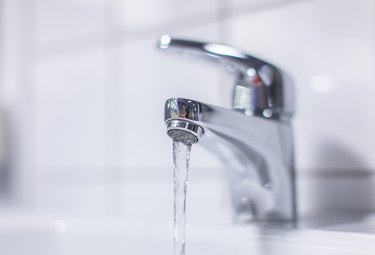Best Approaches for Resolving Low Water Pressure in Your Home
Best Approaches for Resolving Low Water Pressure in Your Home
Blog Article
They are making a number of good observations regarding 4 Ways to Troubleshoot Low Water Pressure in general in this post further down.

Low tide stress in your house can be an aggravating issue, influencing everything from bathing to washing recipes. If you're experiencing weak water flow, there are numerous possible causes and options to discover. In this guide, we'll go over typical factors for low water pressure and practical steps to address the concern effectively.
Intro to Low Tide Pressure
Low tide stress happens when the circulation of water from your taps, showers, and other fixtures is weaker than typical. This can make daily tasks much more challenging and much less reliable. Comprehending the causes of low water stress is critical to finding the appropriate solution.
Common Causes of Low Tide Pressure
Pipe Obstructions
Gradually, pipes can come to be blocked with mineral deposits, sediment, or particles, limiting the flow of water. This is an usual concern in older homes with galvanized steel pipes.
Corrosion
Rust within pipelines can lead to leakages and reduced water stress. Rust buildup can constrict water flow, specifically in aging plumbing systems.
Faulty Stress Regulators
Stress regulatory authorities are in charge of maintaining regular water pressure in your home. If they malfunction, it can cause low tide pressure or unequal circulation throughout your home.
Local Water System Issues
Often, the trouble exists outside your home. Metropolitan supply of water issues, such as main line leakages or maintenance work, can momentarily lower water pressure in your location.
Just How to Detect Low Water Stress
Inspecting Faucets and Fixtures
Start by checking the water pressure at different faucets and components throughout your home. If the concern is isolated to certain locations, it may show localized problems.
Inspecting Pipes
Examine visible pipes for signs of leakages, corrosion, or clogs. Take note of any kind of uncommon noises, such as banging or rattling pipelines, which could suggest concerns within the plumbing system.
Consulting with a Plumber
If you're unable to pinpoint the source of low water pressure, take into consideration employing an expert plumber to perform an extensive inspection. They can identify underlying concerns and recommend suitable remedies.
DIY Solutions to Deal With Low Water Pressure
Cleaning Aerators and Showerheads
Natural resources can collect in aerators and showerheads, lowering water circulation. Remove and clean these components on a regular basis to enhance water stress.
Flushing Water Heater
Debris build-up in the hot water heater can limit circulation and minimize efficiency. Flushing the tank occasionally helps eliminate debris and maintain optimum efficiency.
Examining Stress Regulatory Authority
Guarantee that the stress regulator is working correctly. Adjusting or replacing the regulatory authority can help restore proper water stress throughout your home.
Cleaning Clogs in Pipeline
For minor obstructions, try utilizing a plumbing snake or chemical drainpipe cleaner to clear blockages in pipes. Be cautious when using chemicals and follow safety and security guidelines.
When to Call a Specialist Plumber
If DIY initiatives fall short to deal with the issue or if you believe significant plumbing issues, it's finest to look for support from a licensed plumber. They have the competence and devices to deal with intricate problems securely and effectively.
Preventive Measures to Keep Water Pressure
Regular Upkeep
Schedule regular maintenance for your plumbing system to avoid problems such as corrosion, leakages, and obstructions. Addressing small issues early can aid avoid even more considerable fixings later on.
Installing a Stress Booster
Take into consideration mounting a stress booster pump to boost water pressure in locations with regularly low flow. This can be especially valuable for multi-story homes or homes with high-demand components.
Tracking Water Usage
Be mindful of water use behaviors and prevent ill-using the plumbing system. Simple modifications, such as shocking showers and laundry lots, can assist maintain ample water pressure.
Final thought
Managing low tide pressure can be frustrating, yet determining the underlying reasons and applying suitable solutions can restore optimal circulation throughout your home. Whether it's cleansing aerators, examining pipelines, or talking to a plumber, taking positive steps can make sure a stable supply of water for your daily demands.
How to Fix Low Water Pressure In Your Home
Municipal Water Supply Issues
Scheduled maintenance, high demand, and water main breaks are all potential causes for low water pressure within a city or county’s water lines. While there’s not much you can do to personally fix a problem with your city or county’s water supply system, you can play a big role in documenting the issue and alerting those who can.
How to fix it:
Ask your neighbors if they are experiencing any issues with low water pressure. If multiple homes are affected, it’s likely related to the city’s water line. Contact the local Water Authority to see if there is any maintenance taking place that might be affecting your supply. Also let them know of your specific issues. If other homeowners report the same issues, they’ll know that there could be a larger issue to look into. Faulty Fixtures
A damaged or clogged shower head, faucet or appliance is the first thing we’d suggest checking, especially if low water pressure appears to be isolated to a specific area of your home.
How to fix it:
First, turn off the main water supply to your home. Check the affected appliances for build-up or debris. In the case of a faucet, you can simply unscrew the aerator at the tip of the faucet. Showerheads should be fully detached from the water pipe. While the appliances are detached, you may want to check the water supply to determine if the fixtures were in fact the issue. To clean, soak the showerhead or aerator in vinegar and brush off any visible debris. Reattach the fixtures and check the water pressure again. If it is still low, there is likely a deeper issue at hand, which can be determined by a professional plumber. Pipe Obstructions
Mineral deposits, rust or other debris within water pipes can lead to blockages or corrosion over time.
How to fix it:
When you think of a clog, you probably think of a drain clog. While there are many DIY solutions to clearing a drain, clogs in a water pipe will almost always require the help of a professional plumber. A plumber will be able to locate the affected pipe and clean out any debris or mineral deposit buildup. In severe cases, the pipe may need to be replaced. Your plumber might also recommend a water softening system to remove the minerals from your home’s water supply that can contribute to pipe blockages over time.
Plumbing Leak
Undetected water line leaks can divert water away from your residential pipes, reducing the water pressure in your fixtures.
How to fix it:
Check your water meter by turning off all water sources and monitoring the meter for any movement, which could be a clear indicator of a potential leak. Check all visible pipes for signs of leaking, including water stains, active dripping or damp spots around the pipe. Inspect fixtures, including faucets and showerheads, for any drips. Test the pressure but recording the pressure with the main water valve shut off. Leave off for a few hours and test again. A significant drop in pressure is a clear sign of a leak. https://kiddcoplumbing.com/plumbing-blog/how-to-fix-low-water-pressure/

I am very interested in 10 Reasons for Low Water Pressure in Your House and I really hope you appreciated the blog posting. Sharing is caring. Helping people is fun. Thank-you for taking the time to read it.
Click Here Report this page